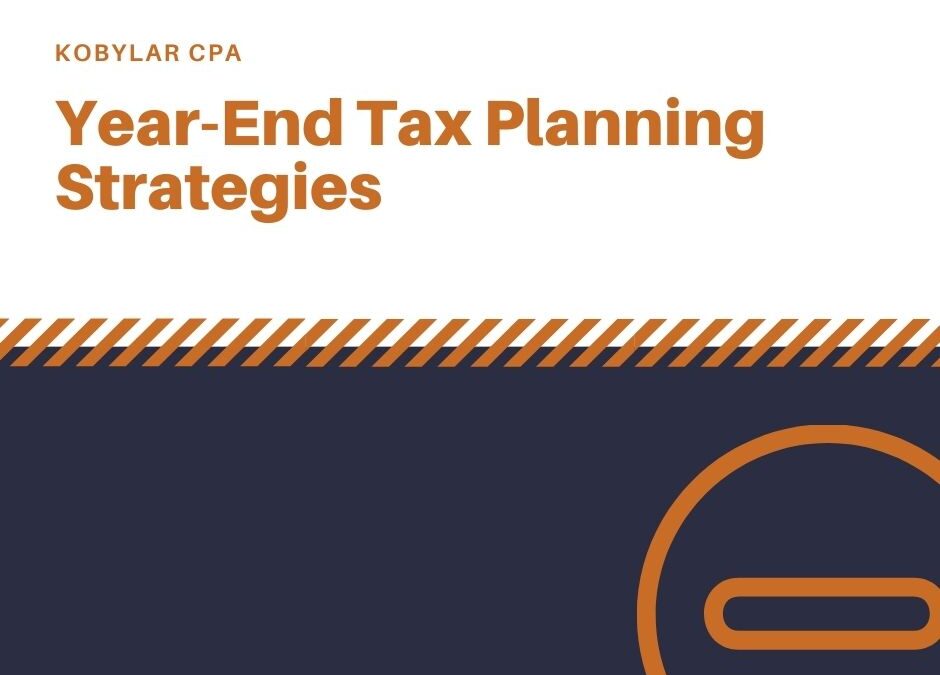Timing always plays an important role in year-end tax planning and 2020 is no different. However, with the unusual year that 2020 turned out to be, with the COVID-19 crisis, business shut-downs and high unemployment, the timing of reporting your income and deductions may be even more important now. Typically, the goal is to defer taxable income into a future year and accelerate deductions into the current year. Conversely, if you expect to be in a higher tax bracket next year, you should consider doing the opposite by accelerating income into the current year and pushing deductions into the following year.
Here are some possible ways that you can still save taxes in 2020:
1. Take Advantage of Incentives for Charitable Giving in The CARES Act
Passed earlier in 2020 in response to economic hardships caused by the coronavirus pandemic, the law encourages increased charitable giving in three primary ways:
Creating an above-the-line $300 deduction for qualified contributions, whether or not you itemize your deductions.
A. Eliminating the 60% deduction limit. Donors can offset 100% of 2020 adjusted gross income, a massive opportunity for those with big philanthropic aspirations.
B. Increasing the deduction limit for corporations, from 10% of taxable income to 25%.
C. These incentives will expire on December 31, 2020.
2. Open a Donor Advised Fund
A donor advised fund account is a planning tool that may be used to reduce your income taxes and help fulfill philanthropic goals. It’s an investment account specifically for charitable giving. Donors get an immediate tax benefit for contributions that can be distributed to a qualified non-profit organization over time, on your schedule, even as a legacy.
This tactic generally works best for individuals who already give generously and either had a high-income year or own highly appreciated assets that will be subject to capital gains taxes when sold.
3. Turn Investment Losses into Tax Savings
Tax-loss harvesting involves selling an investment at a loss for the purpose of offsetting taxable capital gains and up to $3,000 of ordinary income for a married couple (or $1,500 for an individual). Net losses exceeding the annual limit can be carried over to future years. Typically, the proceeds will be used to purchase another investment to maintain the same asset allocation and invested in a better security.
4. Convert a Traditional IRA to a Roth IRA
Once you reach age 59 ½, and have had the account open for at least five years, a Roth IRA generates tax-free income. Converting all or a portion of a Traditional IRA to a Roth may reduce your income taxes for years to come.
The downside is that you will owe income taxes based on the value of the assets at the time of conversion. Still, a Roth Conversion may be worthwhile if you expect to be in a higher tax bracket in the future.
5. Maximize Your Retirement Plan
If possible, contribute the maximum annual amount to an IRA, 401k, or other tax-deferred retirement plan. Additional contributions not only increase savings towards retirement, but also reduce your taxable income in the current year.
You can fund an IRA contribution for 2020 as late as the April 15, 2021 tax deadline. There are no income restrictions on making a tax-deductible contribution to a traditional IRA unless you or your spouse are an active participant in an employer-sponsored retirement plan. If that is the case, the deduction starts to phase-out once Adjusted Gross Income exceeds:
$65,000 for single or head of household
$104,000 for married filing jointly
$10,000 for married filing separately
6. Fund or Spend the Money in Your Health Care Accounts
Similar to funding a tax-deferred retirement account, pre-tax contributions to a Health Savings Account (HSA) or a Flexible Spending Account (FSA) can reduce your taxable income.
If you have a High Deductible Plan at work and you’re eligible for an HSA, consider taking advantage before year-end. HSAs provide triple tax advantages, whereas the contributions go into the account as a tax-deductible contribution, funds grow tax-free, and the distribution comes out tax-free too (so long as the distribution is used for qualified medical expenses).
Typically, money in an FSA must be spent before December 31st. So, make sure to use it before you lose it.
7. Consider Deferring Income If You are Self Employed
If you report your income on the cash basis of accounting and depending on your business and cashflow, it may make sense to delay billings until the end of December. This will ensure you get paid in January of 2021 and the income will be reported on next year’s tax return instead of this year.
Deferring business income is generally only advisable if you expect to be in a lower (or at least the same) tax bracket next year. If the opposite is true, you can try to accelerate income into 2020.
8. Accelerate Other Deductions
If you will be itemizing your deductions rather than claiming the standard deduction, you may be able to increase some deductions before year’s end, including:
Property tax bill due at the beginning of the following year
Hospital or doctor’s bill
Charitable contributions
Estimated state income tax bill due in January.
Tax Planning Strategies for Retirees
9. Review IRA Distributions
The CARES Act suspended required minimum distributions (RMD) from retirement accounts in 2020. So, if you don’t need the money from an IRA account and don’t want to pay the taxes, you don’t have to.
However, similar to Roth conversions, in a low-income year it may make sense to take RMDs to benefit from lower tax rates.
10. Charitable Giving with Qualified Charitable Distribution (QCD)
If you are over age 70 ½ and take your RMD for the year, consider a QCD, which is a direct transfer of funds from your IRA, payable to a qualified charity.
From a tax standpoint, a QCD is most beneficial when it makes your total itemized tax deductions higher than the standard deduction. Oftentimes, this is achieved by contributing an amount that would have been donated over the course of several years.
If you have any questions on these ideas or other year-end tax concerns, please contact us.
Subscribe to our blog or follow our social media channels so we may keep you up to date with the latest information.

